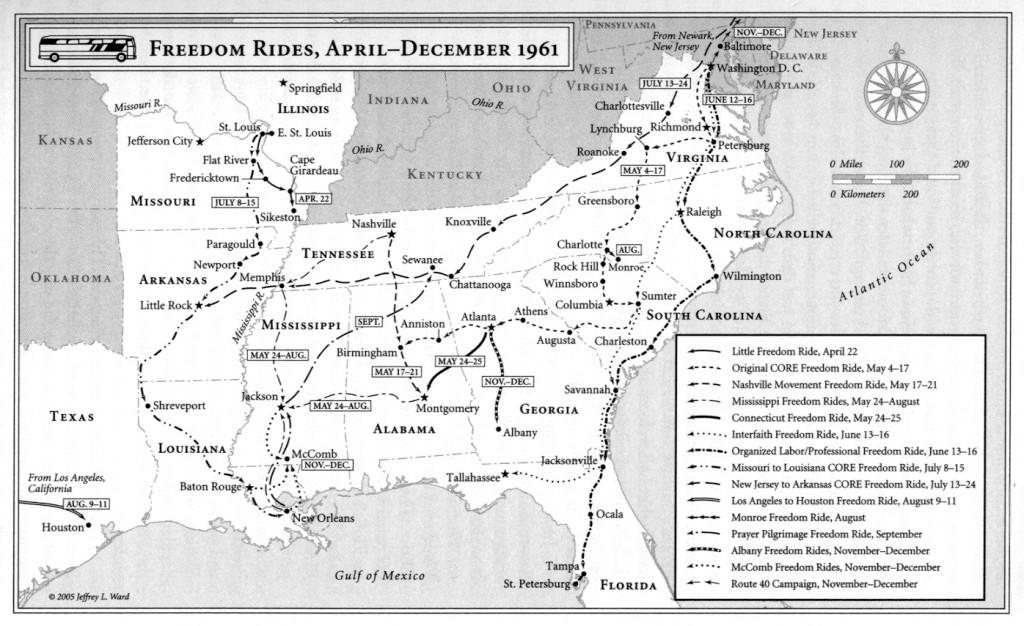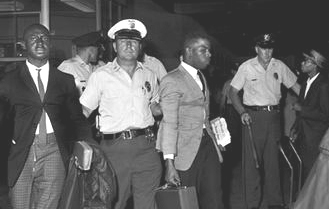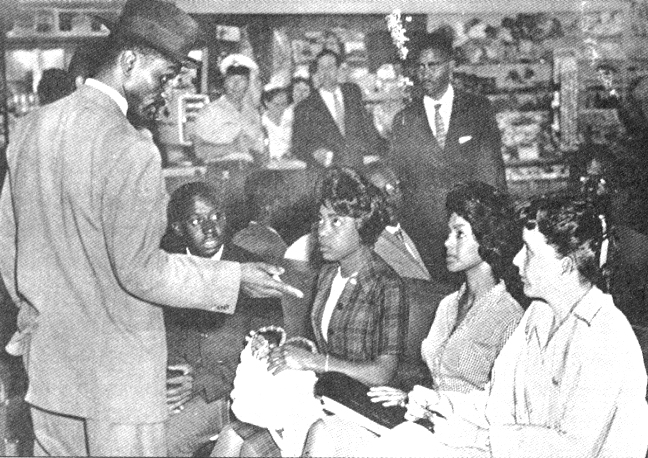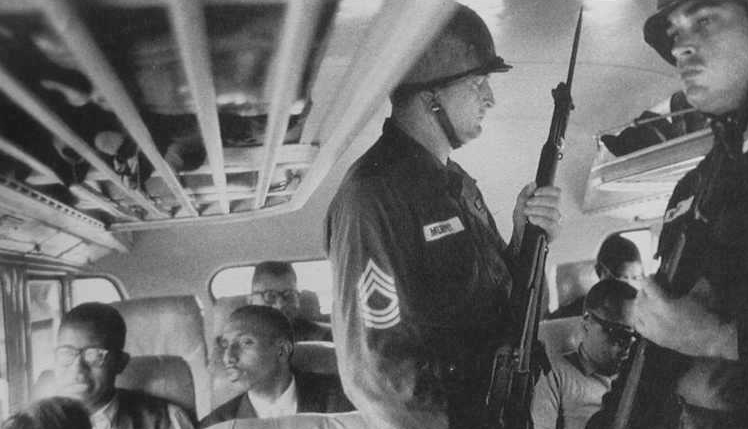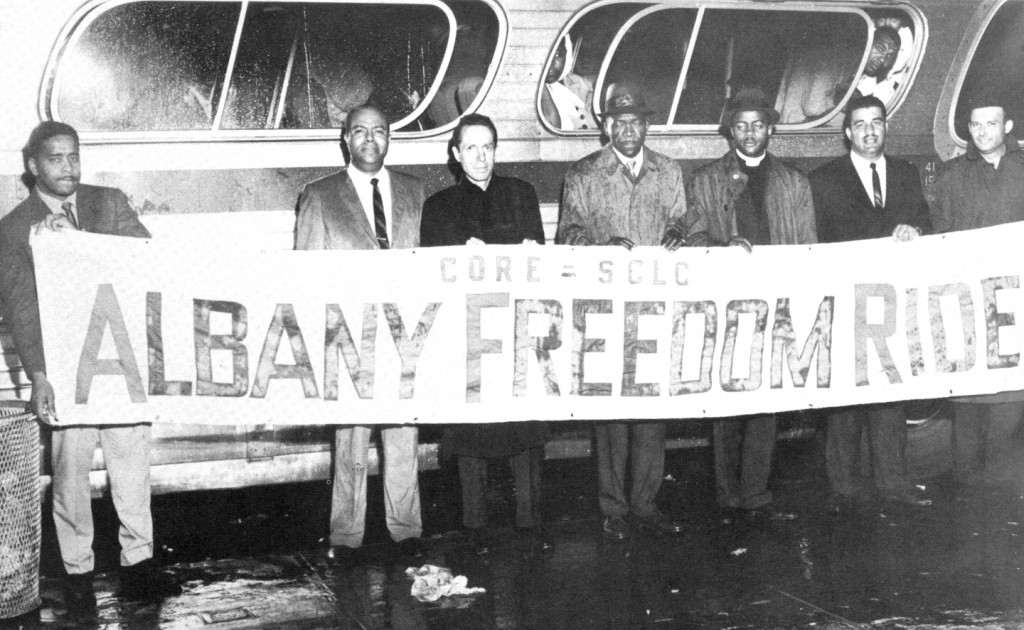In 1961 CORE aimed to desegregate public transportation throughout the south, known as the “Freedom Rides”.
The first Freedom Ride took place on May 4, 1961; seven blacks and six whites left Washington, D.C., on two public buses bound for the Deep South. The ride aimed to test the Supreme Court’s ruling in Boynton v. Virginia (1960), which declared segregation in interstate bus and rail stations unconstitutional.
In the first few days, the riders encountered little trouble and minor hostility, but when theride reached the Deep South, they encountered much resistance. Outside Anniston, Alabama, one of our buses was burned, and in Birmingham several dozen whites attacked the riders only two blocks from the sheriff’s office. The U.S. Justice Department intervened and most of our Freedom Riders were evacuated from Birmingham, Alabama to New Orleans.
However, some CORE leaders decided that letting violence end the trip would send the wrong signal to the country. And so they reinforced the pair of remaining riders with volunteers, and the trip continued. The group traveled from Birmingham to Montgomery without incident, but on their arrival in Montgomery they were savagely attacked by a mob of more than 1000 whites. This violence and the indifference of Alabama police prompted a national outcry of support for the riders, and it put pressure on President Kennedy to end the violence.
Theses riders then continued to Mississippi, where they endured further brutality and jail terms but also garnered more publicity, support and inspired dozens more Freedom Rides. By the end of the summer, the rides had spread to train stations and airports across the South, and in November, the Interstate Commerce Commission issued rules prohibiting segregated transportation facilities.
Charles Butler and John Lewis arrested at Birmingham bus depot.
The Rev. Fred Shuttlesworth with Freedom Riders Charles Butler, Catherine Burks, Lucretia Collins, and Salynn McCollum in the “white” Greyhound terminal waiting room.
Public opinion forces President Kennedy to call out the National Guard to protect the riders. Nashville Freedom Riders Rip Patton (left) and Bernard LaFayette (aisle) with Jim Lawson seated behind them on the bus headed into Jackson MS with National Guard troops standing guard.
But more Freedom Riders follow, coming down from the North and rolling in from the West. All are imprisoned. More than 300 are jailed in Jackson alone. Similar arrests occur in other Southern towns. The rides only end when public outcry forces the Kennedy administration to enforce the laws and rulings prohibiting segregation in interstate commerce.

